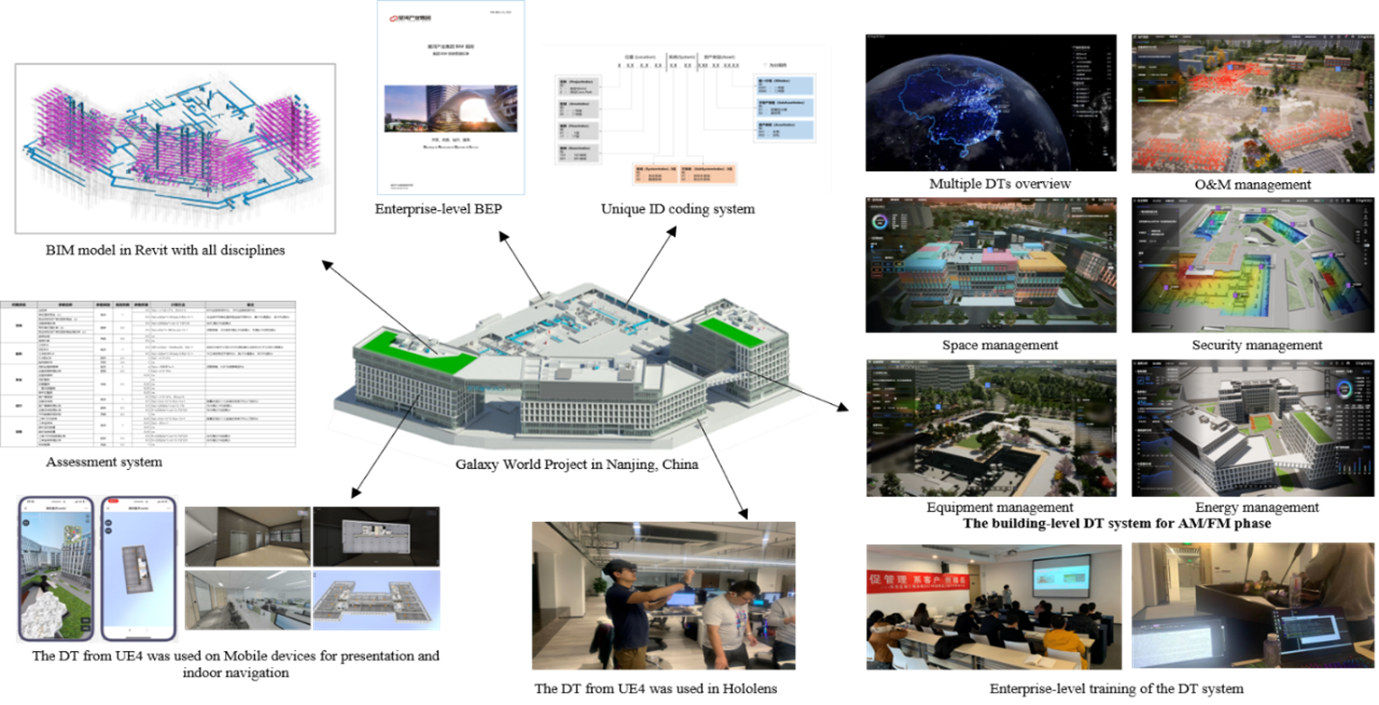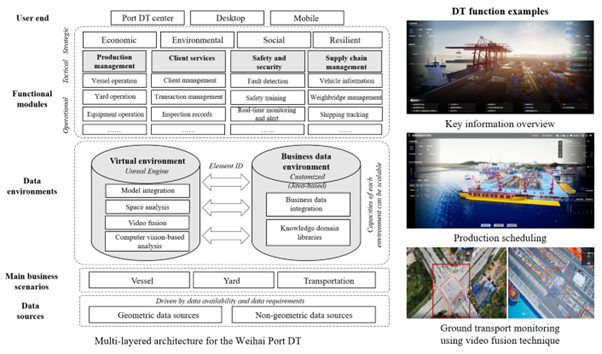Authors: Dr Qiuchen Lu, Associate Professor, at The Bartlett School of Sustainable Construction, University College London.
Dr Qiuchen Lu, Associate Professor, at The Bartlett School of Sustainable Construction, University College London, reflects on the impact of her research into the adoption of digital twins for operation and maintenance, including its implementation in two different projects in China.
A digital twin (DT) refers to a digital replica of physical assets, processes, and systems. DTs integrate artificial intelligence, machine learning, and data analytics to create living digital simulation models that can learn and update from multiple sources as well as represent and predict the current and future conditions of physical counterparts. However, current activities related to DTs are still at an early stage with respect to buildings and other infrastructure assets from an architectural and engineering/construction point of view. Less attention has been paid to the operation and maintenance (O&M) phase, which is the longest time span in the asset life cycle.
A systematic and clear architecture verified with practical use cases for constructing a DT would be the foremost step for effective operation and maintenance of buildings and cities. According to current research about multitier architectures, our study presents a system architecture for DTs that was specifically designed at both the building and city levels. Based on this architecture, firstly a DT demonstrator of the West Cambridge site of the University of Cambridge in the UK was developed that integrates heterogeneous data sources, supports effective data querying and analysis, supports decision-making processes in O&M management, and further bridges the gap between human relationships with buildings/cities.
We also extended and used this architecture for many different implementations, as follows:
1. Galaxy DT
A web-based digital twin (DT) has been developed for a commercial building in Nanjing, China, in the building operation stage. By collecting and analysing the requirements from a multi-stakeholder perspective (e.g., owner, managers, technicians), the DT was designed and developed targeting five functional modules: space analysis, energy, security, equipment, and daily maintenance. Data sources of BIM (construction stage), IoT sensors, ERP (Enterprise Resource Planning) system, IBMS (Integrated Building Management System) were integrated via a customised unique ID systems designed for the project owner. And Unreal Engine was used as the high level of detail virtualisation tool for the DT.

Fig.1 Overview of the DT practice in Nanjing, China
2. Weihai Port DT
Weihai Port DT was developed to help the port authority to improve the port operation efficiency facing the poor and isolated data condition. Based on requirement analysis at strategy, tactical, and operational levels, four functional categories were included in the DT as in production management, client services, safety and security, supply chain management. All functions were designed to focus on three business scenarios of vessel, yard, and ground transport. Technically, the data availability and data requirements in Weihai Port were addressed from geometric and non-geometric data perspectives, and the port data environments were developed to facilitate long-term data management.

Fig.2 Overview of the Weihai Port DT practice in China
Future digital twins research
Dr Lu and her team plan to develop more digital twin-based implementations, such as for hospitals and infrastructures. Particularly, how to use digital twins for enhancing sustainability and resilience will be our future directions.
References
Yan, J., Yin, K., Lu, Q. and Shen, X. (2021). ‘Developing a Web-Based BIM Asset and Facility Management System of Building Digital Twins’. In Computing in Civil Engineering 2021 (pp. 490-497).
Yan, J., Lu, Q., Yin, K., Shen, X., Liu, Y., Sun, S. and Broyd, T. (upcoming), ‘Digital Twin Development For Smart Port: A Case Study Of Weihai Port’, in Asadi, S., Cheng, J., Jebelli, H., Liu, R., Mutis, I. and Smith, I. (ed.) Digital Twins for Construction and the Built Environment. ASCE book publishing.

Sustainable structures and infrastructures
We are passionate about supporting researchers, policymakers, and practitioners in their efforts to minimise the environmental impact of structures and infrastructures.
